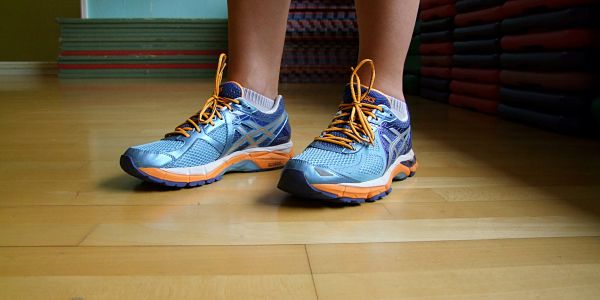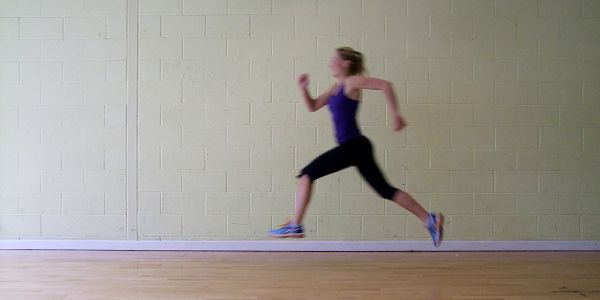Beginner workout
Hi, my name is Alice and I am a third year student. I used to play a bit of sport at school and go to the occasional yoga class with my sister. I have tried the gym once before, but have only been on the running machine. There are some benefits that I would really like to get from exercising, however I don’t really know what exactly I should be doing. I also find it a bit intimidating exercising in front of others, as I don’t want to look silly doing something wrong. I do feel that if I knew more, I would be more confident at going out and exercising.
Whether you can relate to the testimony above, or just want to learn more about what exercise is best for you and how to do it, this beginners guide is for you. Best of all, all the exercises can be done anywhere – whether you are outdoors, at home or in the gym.
This guide will talk you through the four key areas of exercise: warm up, resistance training, cardio and core. Each section will tell you about why it is important (the health benefits you will get), what exercises to do, and how to do them correctly. Then at the end, try tying it all together in the beginner circuit.
Warm up

Why is warming up important?
It reduces the risk of injury and prepares your body for exercise.
How to warm up?
Five minutes light to moderate cardio. This can include anything from jogging, to skipping, to using the cardio equipment in the gym (cross trainer, cycling machine, treadmill). The aim is to increase your heart rate, raise your body temperature and warm up your muscles.
Resistance training
.jpg)
What is resistance training?
Resistance training (also known as weight training) is where you work your muscles against a load. This includes working your muscles against your own body mass (bodyweight squats or press ups), as well as using extra weight (lifting weights in the gym).
What are the benefits?
- Physical health - reduces risk of diseases, from osteoporosis to diabetes.
- Mental health - improvements in fatigue, self-esteem and depression.
- Body shape – increased muscle development (muscle increase will be limited for women due to a lack of testosterone).
- Reduces risk of sports injuries and aches (such as lower back pain).
- Weight loss – resistance training increases the activity of your resting metabolism.
Step by step guide to Resistance Training:
- Select your exercise.
- Perform repetitions (reps) of the exercise until the exercise becomes challenging or you lose technique. This is your first ‘set’.
- Rest for one to two minutes.
- Do your second set (repeat step two).
- Rest for one to two minutes.
- Do your third set.
- Congratulations! You've finished. Move on to the next exercise.
Adding weight
Once you can do 12 repetitions with perfect form you can start adding weight. You can do this at home, for example by holding shopping bags or wearing a rucksack with books in, or in the gym by holding dumbbells. Start with a light weight and aim to do between 8-12 reps. If you can’t do 8 the weight is to heavy and you should go lighter. If you can do more than 12, try upping the weight!
Exercises
Cardio

Two ways to do cardio:
- Continuous cardio training – running at a steady pace for 45 minutes.
- Interval training - short bursts (sprints) of moderate-high* intensity separated by rest periods. Sprint for 15 seconds, walk for 45 seconds, repeat five times. (*moderate-high intensity means that if you tried to have a conversation it would be difficult completing full sentences).
What is best?
For health benefits and weight loss, studies have shown that interval training is either just as good, or even better than continuous training. Not only this, but interval training requires much less time than continuous training. So for greater benefits and for less time – interval training is best!
Step by step guide to interval training
- High-intensity exercise for 15 seconds (eg running).
- Light exercise for 45 seconds (eg walking).
- Repeat until you have done five sprints.
How to do interval training
The great thing about interval training is you can choose whatever exercise you enjoy most. A few examples:
- outdoors: running, cycling
- home: skipping
- gym: cross training, running machine, exercise bike.
Progression
Once you start to get fitter you can start adding more high-intensity bursts, up to a total of ten. Once you have completed your first five, rest for three minutes before starting again. This is important to make sure you maintain a high intensity.
Core

Two ways to train your core
- Resistance training – all the beginner exercises will engage and work your core. Make sure to keep a good tall posture for all the exercises for maximal core engagement.
- Focused core exercises – the plank.
Myth Buster: Core training and abs
Contrary to popular belief, core training won’t improve your abs. How much your abs show is simply related to how much body fat you have covering them.
So why train my core?
There are still many benefits from core training
- improved posture
- decreased risk of exercise injuries
- reduced risk of back pain
- improved strength
Exercise
Perform until you lose the correct technique or the exercise becomes too challenging.
Learn the best way to breathe during resistance training and cardio
Health caution
If you are planning on becoming more physically active, then please check out this one-minute questionnaire which will tell if you should see your GP first.
Evidence-based exercise
The information on Get Exercise Confident is supported by NHS guidelines, exercise specialists and research papers (PDF, 63kB).